|
|
Creator | Title | Description | Subject | Date |
| 26 |
 |
Codding, Brian F. | Explaining prehistoric variation in the abundance of large prey: a zooarchaeological analysis of deer and rabbit hunting along the Pecho Coast of Central California | Three main hypotheses are commonly employed to explain diachronic variation in the relative abun dance of remains of large terrestrial herbivores: (1) large prey populations decline as a function of anthro pogenic overexploitation; (2 ) large prey tends to increase as a result of increasing social p... | Foraging; Resource depression; Prestige hunting; Paleoclimatic variability; Human behavioral ecology; Zooarchaeology; Central California | 2009-11-14 |
| 27 |
 |
Codding, Brian F. | Interpreting abundance indices: some zooarchaeological implications of Martu foraging | Indices of taxonomic abundance are commonly used by zooarchaeologists to examine resource inten sification, overexploitation and gender divisions in foraging labor. The original formulation of abundance indices developed a clear interpretive framework by linking the measure with foraging models from... | Human behavioral ecology; Zooarchaeology; Ethnoarchaeology; Resource intensification; Gender division of labor; Western Australia | 2010-07-20 |
| 28 |
 |
Codding, Brian F. | A land of work: foraging behavior and ecology | Work is a core theme in many of the major issues and debates in California archaeology. Work is central in understanding why the first Californians entered the region (e.g., Erlandson, this volume): how thousands of years of work following colonization resulted in the overexploitation of particular ... | Human behavioral ecology; Hunter-gatherer; North America: California | 2012-03-15 |
| 29 |
 |
Codding, Brian F. | Environmental productivity predicts migration, demographic, and linguistic patterns in prehistoric California | Global patterns of ethnolinguistic diversity vary tremendously. Some regions show very little variation even across vast expanses, whereas others exhibit dense mosaics of different languages spoken alongside one another. Compared with the rest of Native North America, prehistoric California exemplif... | Colonization of North America; Prehistoric migrations; Human behavioral ecology; Ideal free distribution; Ideal despotic distribution | 2013-09-03 |
| 30 |
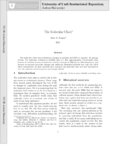 |
Rogers, Alan R. | The molecular clock | The molecular clock uses evolutionary changes in proteins and DNA to measure the passage of time. Yet molecular evolution is clocklike only to a first approximation. Uncertainties arise because of variation in rates of molecular evolution, because of difficulty in calibrating clocks, and because we ... | | 2013-01-01 |
| 31 |
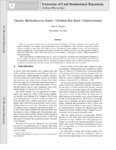 |
Rogers, Alan R. | Genetic relatedness to sisters children has been underestimated | Males of many species help in the care and provisioning of offspring, and these investments often correlate with genetic relatedness. For example, many human males invest in the children of sisters, and this is especially so where men are less likely to share genes with children of wives. Although t... | | 2013-01-01 |
| 32 |
 |
Harpending, Henry C. | Paternal age and genetic load | The incidence of base substitutions in humans increases with the age of the father, which shows up as an increased incidence of mutational disorders in the children of older fathers. There is a less obvious implication: an extended period of high average paternal age in a population will lead to inc... | | 2013-01-01 |
| 33 |
 |
Loeb, Laurence D. | Laurence Loeb slides | | | |
| 34 |
 |
Harpending, Henry C. | J. P. Rushtons theory of ethnic nepotism | Unreciprocated aid among co-ethnics and the emotional intensity of ethnic conflict have long been explanatory challenges to evolutionary science. J. P. Rushton's theory of assortative ethnic affiliation-altruism, mating and friendship directed towards fellow ethnics-derives from his more general the... | | 2012-01-01 |
| 35 |
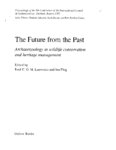 |
Broughton, John | Pristine benchmarks and indigenous conservation? Implications from California zooarchaeology | The superabundance of tame wildlife during the early historic period in California astonished European explorers. And the historic accounts of incredible animal densities, most notably artiodactyls, have influenced a long-held perception that California Indians lived in harmony with nature. However,... | | 2004-01-01 |
| 36 |
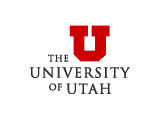 |
Loeb, Laurence D. | Sanandaj Rezaiyeh (reel six, side two) | This is an audio recording made by the author. We are in the process of gathering complete metadata from the author. | | |
| 37 |
 |
Loeb, Laurence D. | Sanandaj Rezaiyeh (reel six, side one) | This is an audio recording made by the author. We are in the process of gathering complete metadata from the author. | | |
| 38 |
 |
Loeb, Laurence D. | Sanandaj (reel five, side two) | This is an audio recording made by the author. We are in the process of gathering complete metadata from the author. | | |
| 39 |
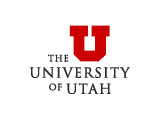 |
Loeb, Laurence D. | Sanandaj (reel five, side one) | This is an audio recording made by the author. We are in the process of gathering complete metadata from the author. | | |
| 40 |
 |
Hawkes, Kristen | Hadza children's foraging: juvenile dependency, social arrangement and mobility among hunter-gatherers | Presents a study on the foraging activities of Hadza children in Tanzania, Africa. Success of children's foraging; Determinants of children's foraging; Monitoring of the activities of children; Near-camp foraging return rates; Variables underlying the patterns of foraging. | Children; Foraging; Hazda; Hunter-gatherers | 1995 |
| 41 |
 |
Loeb, Laurence D. | Prestige and piety in the Iranian synagogue | Among Iranian Jews, long deprived of meaningful political power and afraid to conspicuously display material wealth, relative prestige became more valued that authority of opulence. The synagogue provides the traditional public forum where meaningful interaction among its members reinforces rand dif... | Shirazi Jewish Socieity | 1978 |
| 42 |
 |
McElreath, Richard | Can females gain additional paternal investment by mating with multiple males? a game theoretic approach | Although females may require only one mating to become inseminated, many female animals engage in costly mating with multiple males. One potential benefit of polyandrous mating is gaining parental investment from multiple males. We developed two game theoretic models to explore this possibility. Our... | Female multiple mating; Polyandry; Nonprocreative mating; Paternal investment; Mating benefits; Mating strategy | 2001-11 |
| 43 |
 |
Cashdan, Elizabeth A. | Competition between foragers and food producers on the Botletli River, Botswana | The immigration of food-producing groups into areas occupied by hunters and gatherers must have been a common occurrence in prehistory. How were the hunter-gatherers affected by this? I describe here two groups of Kalahari Basarwa ('Bushmen'), one living along the flood plain of the lower Botletli ... | Kalahari Basarwa; Bushmen; Foraging; Cattle | 1986 |
| 44 |
 |
Cashdan, Elizabeth A. | Territoriality among human foragers: ecological models and an application to four Bushman Groups | Discussions of human territoriality have become more sophisticated in recent years; we see fewer arguments for or against the adaptiveness of territoriality for mankind in general and more attempts to probe the ecological factors that make territoriality adaptive in particular circumstances. | Foraging; Ecological Models; Bushman | 1983-02 |
| 45 |
 |
O'Rourke, Dennis H. | Unangan past and present: the contrasts between observed and inferred histories | Abstract Academic research focusing on the population and culture history of the Aleut (Unangan) people began in the late 19th century and continues to the present. The papers in this special issue of Human Biology summarize the latest results from archaeological, linguistic, genetic, and morphometr... | | 2010 |
| 46 |
 |
Hawkes, Kristen | Hunting and nuclear families: some lessons from the Hadza about men's work | Hadza hunter-gatherers display economic and social features usually assumed to indicate the dependence of wives and children on provisioning husbands and fathers. The wives and children of better Hadza hunters have been found to be better-nourished, consistent with the assumption that men hunt to pr... | Subsistence economy; Tindiga, African people; Subsistence hunting | 2001-10-24 |
| 47 |
 |
McElreath, Richard | New methods in quantitative ethnography: economic experiments and variation in the price of equality | A new method for quantitatively documenting concerns for economic fairness has the potential for identifying variation in prosociality within and across societies. Multiple dictator games conducted in two small-scale societies presented decision makers with a choice between an equitable and an ine... | Inequality; Payoffs; Prosociality | 2007-12 |
| 48 |
 |
McElreath, Richard | Shared norms and the evolution of ethnic markers | Unlike other primates, human populations are often divided into ethnic groups that have self-ascribed membership and are marked by seemingly arbitrary traits such as distinctive styles of dress or speech (Barth 1969, 1981). The modern understanding that ethnic identities are flexible and ethnic bou... | Ethnic groups; Ethnic identity; Migration; Markers | 2003-02 |
| 49 |
 |
Broughton, John | Fish remains dominate Barn Owl pellets in northwestern Nevada | The foraging ecology of the Barn Owl (Tytoalba) has been studied extensively, both in the New World (Marti 1988, Castro and Jaksic 1995, Van Vuren and Moore 1998, and others) and the Old World (Glue 1967, Yom-Tov and Wool 1997, and others). Small rodents, insectivores, and small birds are generally ... | Barn Owl pellets; Northwestern Nevada; Fish; Fish remains | 2006 |
| 50 |
 |
Rogers, Alan R.; Jorde, Lynn B. | Origins and affinities of modern humans: a comparison of mitochondrial and nuclear genetic data | To test hypotheses about the origin of modern humans, we analyzed mtDNA sequences, 30 nuclear restriction-site polymorphisms (RSPs), and 30 tetranucleotide short tandem repeat (STR) polymorphisms in 243 Africans, Asians, and Europeans. An evolutionary tree based on mtDNA displays deep African branch... | Base Sequence; Variation (Genetics); Base Sequence | 1995 |

























